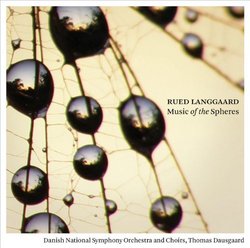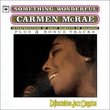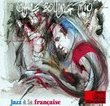| All Artists: Inger Dam Jensen, Hetna Regitze Bruun, Peter Lodahl, John Reuter, Danish National Symphony Chorus Title: Langgaard: Music of the Spheres Members Wishing: 0 Total Copies: 0 Label: Da Capo [Naxos] Release Date: 8/31/2010 Album Type: Hybrid SACD - DSD Genre: Classical Styles: Historical Periods, Modern, 20th, & 21st Century Number of Discs: 1 SwapaCD Credits: 1 UPC: 747313153565 |
Search - Inger Dam Jensen, Hetna Regitze Bruun, Peter Lodahl :: Langgaard: Music of the Spheres
 | Inger Dam Jensen, Hetna Regitze Bruun, Peter Lodahl Langgaard: Music of the Spheres Genre: Classical 'The celestial and earthly chaotic music from red glowing chords with which life plays with claws of beast of prey with an iris-crown round its marble-face with its stereotypic yet living demoniac and lily-like smile.' Thi... more » |
Larger Image |
CD Details
Synopsis
Product Description
'The celestial and earthly chaotic music from red glowing chords with which life plays with claws of beast of prey with an iris-crown round its marble-face with its stereotypic yet living demoniac and lily-like smile.' This surreal description is Danish composer Rued Langgaard's inscription in the score to his visionary 1919 work, Music of the Spheres - one of the few works published in his lifetime and written when the composer was just 26 years old. Premiered in Germany in 1921 and performed again in 1922, the work was then entirely forgotten, or possibly ignored, until after the
composer's death in 1952. Rediscovery came only in 1968 when the composer György Ligeti, who was adjudicating new scores by Scandinavian composers, began reading Music of the Spheres. Ligeti was astonished that many of the techniques he had been employing in his own music had in fact been foreshadowed by Langgaard a half century earlier. 'So after all, I'm
only a follower of Langgaard' commented Ligeti at the time.
Music of the Spheres is a symphonic work of great complexity, calling for a large orchestra, organ and choir, a supporting (distant) orchestra including a soprano voice, and a further piano on which the strings are played directly rather than via the
keys. Langgaard described his intentions, saying 'In Music of the Spheres, I have completely given up everything one understands by themes, consistency, form, and continuity. It is music veiled in black and impenetrable by mists of death.'
Thomas Dausgaard has long been a champion of Rued Langgaard's works and has recorded all 16 symphonies with the Danish National Symphony Orchestra on Dacapo, a project which was completed in 2009 with the release of the full box set. For this new and important recording Dausgaard couples Music of the Spheres with two later works by Langgaard - The Time of the End and From the Deep - bringing an overview to the composer's music over a period of 35 years.
composer's death in 1952. Rediscovery came only in 1968 when the composer György Ligeti, who was adjudicating new scores by Scandinavian composers, began reading Music of the Spheres. Ligeti was astonished that many of the techniques he had been employing in his own music had in fact been foreshadowed by Langgaard a half century earlier. 'So after all, I'm
only a follower of Langgaard' commented Ligeti at the time.
Music of the Spheres is a symphonic work of great complexity, calling for a large orchestra, organ and choir, a supporting (distant) orchestra including a soprano voice, and a further piano on which the strings are played directly rather than via the
keys. Langgaard described his intentions, saying 'In Music of the Spheres, I have completely given up everything one understands by themes, consistency, form, and continuity. It is music veiled in black and impenetrable by mists of death.'
Thomas Dausgaard has long been a champion of Rued Langgaard's works and has recorded all 16 symphonies with the Danish National Symphony Orchestra on Dacapo, a project which was completed in 2009 with the release of the full box set. For this new and important recording Dausgaard couples Music of the Spheres with two later works by Langgaard - The Time of the End and From the Deep - bringing an overview to the composer's music over a period of 35 years.
Similarly Requested CDs
| Paul McCartney Flowers in the Dirt Genres: Pop, Rock, Classic Rock Label: Capitol | |
| Carmen McRae Something Wonderful Genres: Jazz, Pop, Broadway & Vocalists Label: Collectables | |
| Claude Bolling Jazz a La Francaise Genres: Jazz, Pop, Rock, Classical Label: Sony | |
| Carmen McRae Sings Great American Songwriters Genres: Jazz, Pop, Broadway & Vocalists Label: Verve | |
| Joe Lovano Tenor Legacy Genre: Jazz Label: Blue Note Records | |






